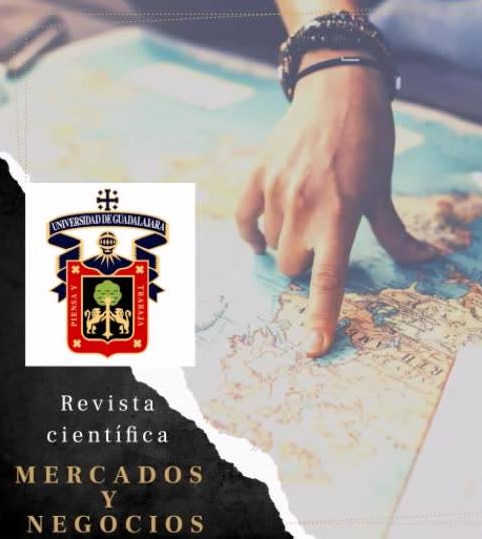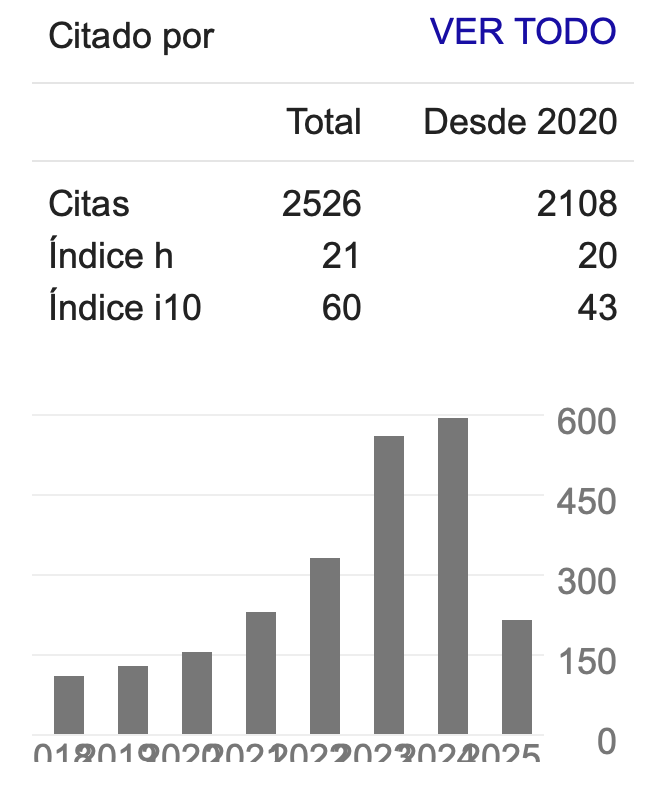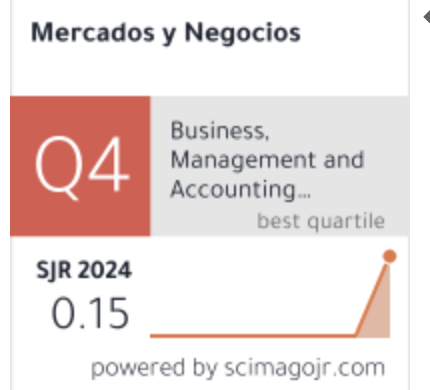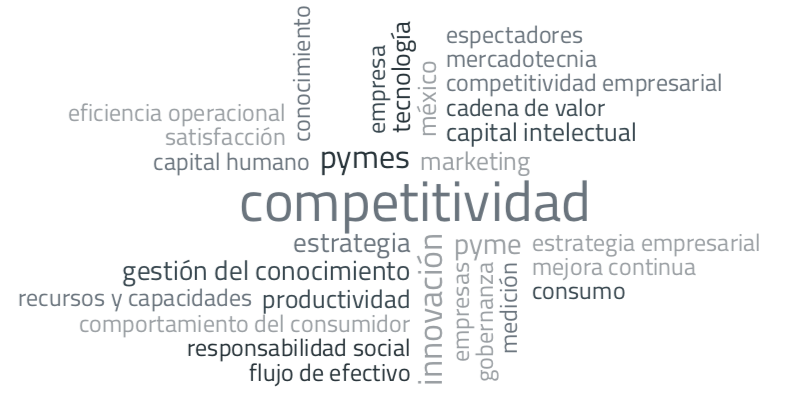La información como fuente de competitividad y competencia de las pequeñas y medianas empresas
DOI:
https://doi.org/10.32870/myn.v0i25.5171Keywords:
información, tecnología, competitividad, competencia.Abstract
En esta investigación se analiza el grado de influencia que tiene el uso de la administración de la información (ai) y de la tecnología de información (ti) en la competitividad y competencia de las pequeñas y medianas empresas, que proporcione una guía de acción para la mejor utilización de la tecnología y de los datos generados en este tipo de instituciones. El estudio empírico se lleva a cabo en la región centro del estado de Tamaulipas (México) por medio de un cuestionario y del análisis de regresión. Los resultados muestran un impacto positivo que tienen en la competencia (principalmente en el liderazgo en innovaciones y seguimiento de competidores) por parte de la ai y la ti. Caso contrario es la competitividad, que no se está viendo favorecida por estos dos últimos factores.References
Arjonilla Domínguez, S. J., & Medina Garrido, J. A. (2002). La gestión de los sistemas de información en la empresa. Colección Economía y empresa/Pirámide.
Banker, R. D., Chang, H., & Kao, Y. C. (2002). Impact of information technology on public accounting firm productivity. Journal of Information Systems, 16(2), 209-222.
Best, D. P. (2010). The future of information management. Records Management Journal, 20(1), 61-71.
Brynjolfsson, E., & Hitt, L. (1995). The Productive Keep Producing–Successful Companies Support Good Business Plans with Right Information Technologies.Information Week, 18, 38-43.
Bueno Campos, E. (2000). Capital intelectual: cuenta y razón. Curso de verano. Valoración de empresas y medición de intangibles.
Chang, H., Chen, J., Duh, R. R., & Li, S. H. (2011). Productivity growth in the public accounting industry: The roles of information technology and human capital. Auditing: A Journal of Practice & Theory, 30(1), 21-48.
Chin, W. W. (1998). Commentary: Issues and opinion on structural equation modeling.
Christen, M. (2005). Research note—cost uncertainty is bliss: The effect of competition on the acquisition of cost information for pricing new products.Management Science, 51(4), 668-676.
Cornella, A., & Vega, A. M. (1995). Los recursos de información. Ventaja competitiva de las empresas. Revista Española de Documentación Científica,18(1), 113.
Corsar, G. (2011). Improving information management: facility owners must take ownership of project information to reduce risk and improve quality when large-capital projects are handed over to project teams and facility operators.Chemical Engineering, 118(3), 34-39.
Daft, R. (2006). Organization theory and design. Cengage learning.
Davenport, T. H., & Prusak, L. (1997). Information ecology: Mastering the information and knowledge environment. Oxford University Press on Demand.
Davenport, T. H. (2002). Misión crítica: promesas y riesgos de los sistemas empresariales de información. Oxford University Press,.
Davenport, T. H., & Prusak, L. (2001). Conocimiento en acción como las organizaciones manejan lo que saben. Prentice Hall.
Dell'Ariccia, G., & Marquez, R. (2008). Can cost increases increase competition? Asymmetric information and equilibrium prices. The Rand Journal of Economics, 39(1), 144-162.
Dewan, S., & Mendelson, H. (1998). Information technology and time-based competition in financial markets. Management Science, 44(5), 595-609.
English, L. P. (2001, January). Information quality management: The next frontier. In ASQ World Conference on Quality and Improvement Proceedings(p. 529). American Society for Quality.
Grant, G. L. (2011). Information technology and its role in creating sustainable competitive advantage.
Hauswald, R., & Marquez, R. (2006). Competition and strategic information acquisition in credit markets. Review of Financial Studies, 19(3), 967-1000.
Hitt, L. M., & Brynjolfsson, E. (1996). Productivity, business profitability, and consumer surplus: three different measures of information technology value.MIS quarterly, 121-142.
Krishnan, R. (2005). The effect of changes in regulation and competition on firms' demand for accounting information. The Accounting Review, 80(1), 269-287.
Leckson-Leckey, G. T., Osei, K. A., & Harvey, S. K. (2011). Investments in information technology (IT) and bank business performance in Ghana.International Journal of Economics and Finance, 3(2), 133.
Loukis, E., Sapounas, I., & Aivalis, K. (2007). The effect of generalized competition and strategy on the business value of information and communication technologies. Journal of Enterprise Information Management,21(1), 24-38.
Marchand, D. A., Kettinger, W. J., & Rollins, J. D. (2002). Information orientation: The link to business performance. Oxford University Press.
Matthews, P. (2007). ICT assimilation and SME expansion. Journal of International Development, 19(6), 817.
Matarazzo, J. M. (1998). The knowing organization: How organizations use information to construct meaning, create knowledge, and make decisions: by Chan Wei Choo. New York: Oxford University Press, 1998. 298p. $60.00 (hardcover). ISBN 0-19-511011-0. $25.95 (softcover). ISBN 0-19-511012-9.
Numally, J. C. (1978). Psychometric theory. NY: McGraw-Hill.
Oppenheim, C., Stenson, J., & Wilson, R. M. (2003). Studies on information as an asset II: repertory grid. Journal of Information Science, 29(5), 419-432.
Peak, D., Guynes, C. S., & Kroon, V. (2005). Information technology alignment planning—a case study. Information & Management, 42(5), 635-649.
Porter, M. E., & Millar, V. E. (1985). How information gives you competitive advantage.
Prahalad, C. K., & Hamel, G. (2006). The core competence of the corporation. In Strategische unternehmungsplanung—strategische unternehmungsführung(pp. 275-292). Springer Berlin Heidelberg.
Sala-i-Martin, X., Bilbao-Osorio, B., Blanke, J., Hanouz, M. D., & Geiger, T. (2011). The global competitiveness index 2011-2012: setting the foundations for strong productivity. The global competitiveness report, 2012.
Scott Morton, M. S. (1991). The Corporation of the 1990s. Information technology and organizational transformation.
Shin, N. (2001). The impact of information technology on financial performance: the importance of strategic choice. European Journal of Information Systems,10(4), 227-236.
Solow, R. M. (1987). We'd better watch out. New York Times Book Review, 36.
Wang, R. Y., Lee, Y. W., Pipino, L. L., & Strong, D. M. (1998). Manage your information as a product. MIT Sloan Management Review, 39(4), 95.
Downloads
Published
How to Cite
Issue
Section
License
Mercados y Negocios by Department of Mercadotecnia y Negocios Internacionales. University of Guadalajara is licensed under a License Creative Commons Attribution-NonCommercial 4.0 International.
The author retains the copyright.








